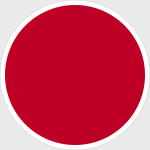DeAgostini DAWF75 Imperial Japanese Navy Nakajima B5N2 "Kate" Dive Bomber - Air Group Commander Lt. Joichi Tomonaga, IJN Hiryu, Battle of Midway, 1942 [No Magazine or Bookcase Packaging] (1:72 Scale)
"Tora! Tora! Tora!"
- Predetermined Japanese signal indicating they had achieved complete surprise leading up to the aerial assault at Pearl Harbor, December 7th, 1941
 The Nakajima B5N (Allied reporting name: Kate) was the Imperial Japanese Navy's standard torpedo bomber for the first years of World War II. While the B5N was substantially faster and more capable than its Allied counterparts, the TBD Devastator and Fairey Swordfish, it was close to obsolescence by the time of the Pearl Harbor Attack. Nevertheless, the B5N operated throughout the whole war. Although primarily used as a carrier-based aircraft, it was also used as a land-based bomber on occasions. The B5N had a crew of 3: pilot, navigator/bombardier/observer, and radio operator/gunner.
The Nakajima B5N (Allied reporting name: Kate) was the Imperial Japanese Navy's standard torpedo bomber for the first years of World War II. While the B5N was substantially faster and more capable than its Allied counterparts, the TBD Devastator and Fairey Swordfish, it was close to obsolescence by the time of the Pearl Harbor Attack. Nevertheless, the B5N operated throughout the whole war. Although primarily used as a carrier-based aircraft, it was also used as a land-based bomber on occasions. The B5N had a crew of 3: pilot, navigator/bombardier/observer, and radio operator/gunner.
The B5N was designed by a team led by Katsuji Nakamura in response to a 1935 specification by the Navy for a torpedo bomber to replace the Yokosuka B4Y. Internally designated Type K by Nakajima, it successfully competed with the Mitsubishi B5M for a production contract. The first prototype flew in January 1937 and was ordered into production soon afterwards with the full designation Type 97 Carrier Attack Bomber.
The B5N soon saw combat, first in the Sino-Japanese War, where combat experience revealed several weaknesses in the original B5N1 production model. These were mainly concerned with the lack of protection that the design offered its crew and fuel tanks. Keen to maintain the high performance of the type, the Navy was reluctant to add weight in the form of armour, and instead looked to obtaining a faster version of the aircraft in the hopes of out-running enemy fighters. The B5N2 was given a much more powerful engine, and various modifications were made to streamline it. Although its performance was only marginally better, and its weaknesses remained unremedied, this version replaced the B5N1 in production and service from 1939. It was this version that would be used by the Navy in the attack on Pearl Harbor. Apart from this raid, the greatest successes of the B5N2 were the key roles they played in sinking the US Navy aircraft carriers Yorktown, Lexington and Hornet.
The B5N served as the basis for a follow-on design, the Nakajima B6N, which eventually replaced it in front-line service. The B5N continued to fly in secondary roles, such as training, target towing, and anti-submarine warfare. Some of the aircraft used for this latter purpose were equipped with early radars and magnetic anomaly detectors. B5Ns were also used as bombers during the unsuccessful defence of the Philippines in October 1944.
Pictured here is a 1:72 scale replica of an Imperial Japanese Navy Nakajima B5N2 "Kate" dive bomber that was piloted by Air Group Commander Lt. Joichi Tomonaga, who was embarked upon the IJN Hiryui, during the attack on Pearl Harbor, on December 7th, 1941. Note: Model does not come with the Japanese language magazine or bookcase packaging.
Now in stock!
Dimensions:
Wingspan: 8-1/2-inches
Length: 5-3/4-inches
Release Date: November 2021
Historical Account: "The Torpedo Missed" - Joichi Tomonaga was the air unit commander of the carrier Hiryu during the Battle of Midway. On June 4th, 1942, he led the morning attack on the American base at Midway, causing serious damage through the heavy American anti-aircraft action, but failed to wipe out the base's utility. He was among the officers who advised Chuichi Nagumo that a second strike on Midway must be launched in order to achieve the mission's objectives. After returning to Hiryu, he led the afternoon torpedo attack on USS Yorktown (CV-5). In a demonstration of sacrificial heroism, he commanded a damaged torpedo bomber that was unable to carry enough fuel to return to Hiryu, if it was able to make it to the American fleet at all. Reaching the Yorktown, he attacked the carrier from her aft port quarter, maintaining his path despite receiving damage from American pilot Jimmy Thach. Tomonaga held his plane long enough to release the torpedo, but immediately afterwards his left wing gave way, sending the plane tumbling into the waves. The torpedo missed.


